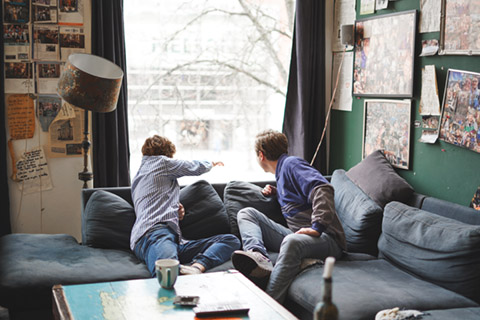
Student plan to cool down square
A giant pergola over the Vismarkt
If there’s one place where they know how to make the world greener, it’s at the university. This series follows what’s happening in the field of sustainability.
Hugo Mohr and Gijs Verkooijen only lasted ten minutes on the outdoor seating on the Vismarkt last summer: it was way too hot. The bricks on the square retain an immense amount of heat. Gijs: ‘Something needs to be done about that, we said to each other.’ Looking down at the Vismarkt from one of the windows of their student house later that day, they found the solution: a green roof covering the square.
‘In summer, the Vismarkt gets up to ten degrees warmer than the rest of the city’, says Hugo, who studies environmental and infrastructure planning. ‘Global warming means this will only keep getting worse.’ But they think their green roof, which they’ve dubbed ‘The Leaf of Groningen’, might solve the climate issues Groningen and other cities are struggling with.
Option 1 | Arches
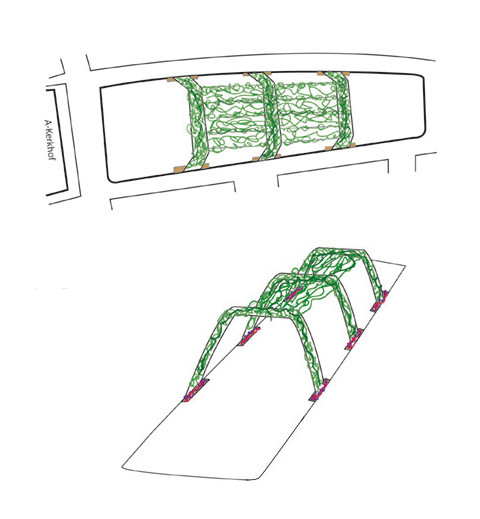
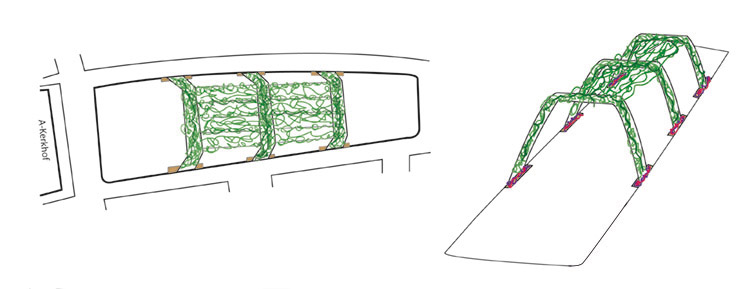
It’s not just about battling the heat: biodiversity in cities is declining, paved squares are flooding because of heavy rain, and there is increasingly less space for nature.
Little room
The city has been aware of the Vismarkt problems for a while, but no one’s been able to come up with a way to remedy it. The square is used for markets and fairs so often that the entire area is needed. ‘The only space that’s available is up in the air’, says Hugo.
We could add 3,000 square metres of greenery
That’s where their plan to create a giant pergola covering the Vismarkt comes in; a five-metre high design with arches and pillars. ‘We would grow plants and flowers on this construction’, explains international business student Gijs. ‘If we cover just half the Vismarkt, we could add approximately three thousand square metres of greenery to the city centre.’
Because plants absorb heat, the square would cool down. At the same time, water would evaporate through the leaves, making the air more humid. ‘The pergola itself would create shade’, says Hugo. The various plants would attract all kinds of insects, which also benefits biodiversity.
Rainwater
The students even think they might be able to solve the drought that global warming has resulted in. ‘We want to collect rainwater in reservoirs in the ground under the support pillars’, Hugo explains. Now, rainwater goes straight into the sewers, but the water that drips down from the plants could be collected and used to water them during times of drought.
Option 2 | A cross
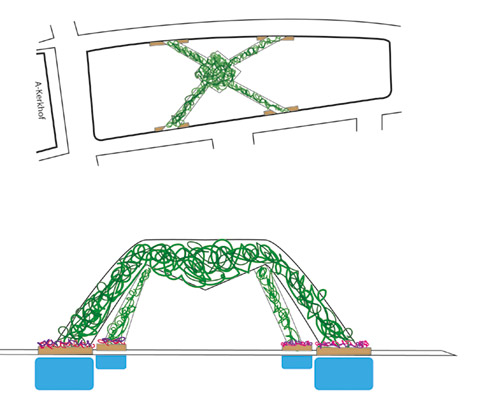
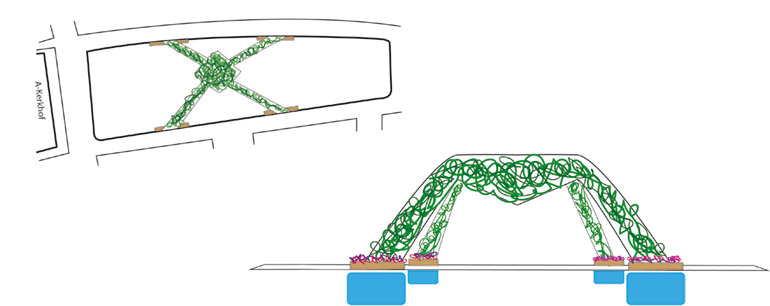
But why don’t we just plant a bunch more trees on the square? Hugo says it’s not that easy. You’d need a lot more trees if you want as much green as you’d get with a roof, but there isn’t enough ground space to plant all those trees. The square would also have to be dug up to move pipes and cables. ‘It also takes trees at least ten years to be fully grown. We’ve talked to an ecologist at the UG and she really loves the plan and thinks it could be a great improvement.’
Difficult to sell
It’s a really simple idea, and yet it hasn’t been implemented anywhere in the world. ‘We can’t understand why no one else has done this yet’, says Hugo. They have their suspicions, though: the concept isn’t immediately economically relevant. They estimate the project would cost a few million euros, but it would generate no revenue. ‘The value of a climate-proofing pergola can’t really be expressed in monetary terms’, says Gijs. ‘That makes it a difficult idea to sell.’
If you plant trees it’ll take ten years before they’re fully grown
Fortunately, they say, more people are beginning to realise the value of things that don’t necessarily earn or save money. ‘Cities have to start adapting to the climate. That realisation has been growing over the past ten years’, says Hugo. ‘Climate change is getting worse, and we simply need projects that solve it.’
In an effort to make investing in the pergola attractive in other ways, they want to make it a tourist destination. They feel the roof should be designed by artists and architects. ‘More tourists means more customers’, says Gijs. ‘Local shops and hospitality businesses and the city would benefit economically from that.’ Cooling down the square will also save shop owners money, since they won’t have to turn on their air conditioning as much.
Option 3 | A leaf
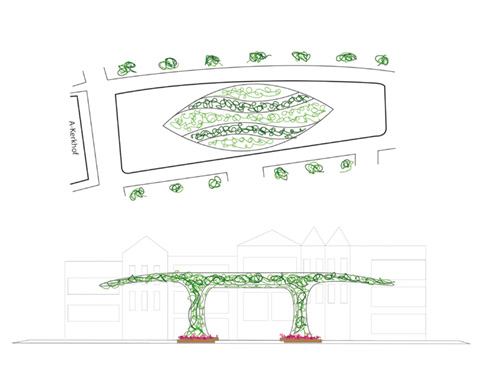
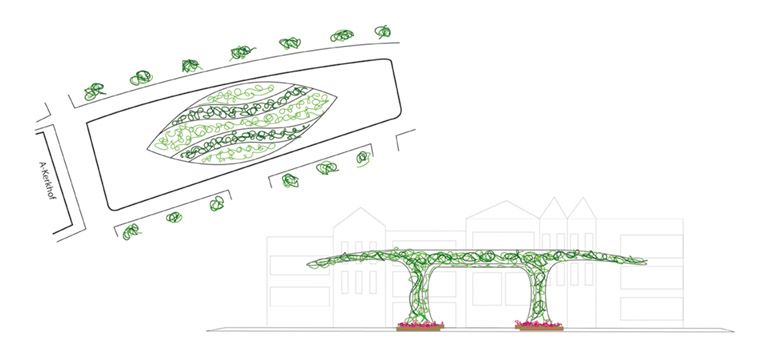
The green art installation should cement Groningen’s reputation as a sustainable city. ‘The number of cities keeps growing, and climate change will continue to be a big problem’, says Hugo. ‘We want to show the world that if you can build a pergola in the middle of a busy historical city, you can put it anywhere.’
Green pilot
The project is still in its very, very early stages. Most of the people they’ve talked to, from architects to the ‘Green Mayor’ the city of Groningen appointed last year, are enthusiastic about the idea. ‘But they all want us to take a closer look at the ecological implications’, says Hugo. Because it’s such a new concept, there’s no data on the ecological impact or the ideal design.
If you can build this pergola here, you can build it anywhere
To come up with the data, they’ve been talking to the UG and Hanze about a partnership, ‘to test a small-scale version of the project’, says Gijs. Hanze students from various fields can work on the pilot version of The Leaf of Groningen as part of the Innovation Lab final project. ‘We’ll have a green pilot version at Zernike by next spring’, the boys say, determined.
They are convinced they’ll be able to make their idea a reality. ‘The Vismarkt is our dream’, says Hugo. ‘We live there, so it’s close to our hearts.’ But they understand it’s a large project and that it won’t happen overnight. Hugo: ‘Yet we keep telling each other that we’ll be able to have a beer in a green oasis at the Vismarkt in ten years.’
Hugo and Gijs are looking for enthusiastic students to help them. They still need people with architectural and ecological know-how on their team. If you’d like to join or if you have any feedback to give, you can contact them at [email protected].